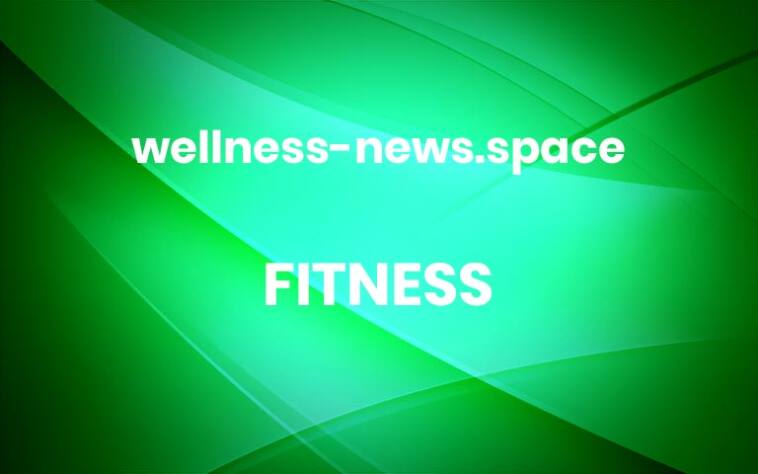“You’re vegan? But where do you get your protein?” People who have decided to follow a vegan diet have certainly heard that often enough. Athletes need even more protein than non-athletes, but they also have to keep an eye on the other essential nutrients. If you work out regularly and eat a plant-based diet, you have to really take a close look at what you eat. This is the only way to be certain that your body will get everything it needs to be able to perform at its best and recover quickly. Anyone who is wondering whether veganism and sports are compatible should take a look at vegan athletes like Patrik Baboumian, Venus Williams, and Brandon Brazier. We’ll tell you how to do it right and show you which nutrients are especially important to ensure a balanced vegan athlete’s diet. The following questions will be answered in this article:1. What does “vegan” mean and what are the benefits?Veganism is a special form of the vegetarian diet. Vegans don’t eat any animal products at all, such as meat, fish, eggs, dairy products, or honey.A plant-based diet……is associated with a lot of health benefits, because plant-based foods are very nutrient-dense. They are rich in fiber, folate, vitamin C, and other vitamins. Vegans also consume more unsaturated fatty acids and less saturated fats.(1)Athletes can really benefit from the high density of nutrients, as they need more vitamins and minerals during an intense workout. The abundance of antioxidants prevents oxidative stress and protects the immune system. A vegan athelte’s diet is also high in carbohydrates. This macronutrient is the most important source of energy, especially during workouts.Tip:Studies show that vegans have a lower energy intake than people who eat animal products.(2) More energy is required if the activity level is high. Avocados, nuts, seeds, and oils should be a regular part of the vegan diet. Frequent smaller meals can also be an easy way to boost the energy intake.2. What are the most important nutrients in a vegan athlete’s diet?In order to maximize performance and prevent deficiencies, athletes who follow a plant-based diet should make sure there is variety in their meals. Particular focus should be on these nutrients:A) Macronutrients CarbohydratesAthletes aren’t the only ones who need carbohydrates. A vegan diet is rich in this macronutrient, which means fiber, antioxidant, and phytochemical intake is strong, too. The high level of micronutrients is one of the biggest benefits of plant-based foods. Exercise can produce free radicals and lead to oxidative stress. Vegan sports nutrition can counter that and support recovery after training.(3) The high intake of fiber from whole-grain products, beans, and lentils may cause gastrointestinal problems. In some situations (before a race) it makes sense to substitute these with low-fiber carbs:ricewhite pastawhite breadIf you’re working out, you should eat a snack rich in carbohydrates before and after training to keep your performance strong. It can be helpful to eat some carbs during your workout if it is a long one. Most supplements (e.g. gels) are vegan, so you can take them without any worries. ProteinMany people think that it’s difficult to get enough protein when you follow a vegan diet. However, if you eat a wide variety of foods and increase the energy intake, this is not an issue. Athletes require more of this macronutrient than inactive people.Calculate your protein requirement:Vegan athletes generally eat less protein than athletes who consume animal products.(4) The challenge is focusing on quantity and quality. Plant-based protein sources often lack some essential amino acids, especially BCAAs or branched chain amino acids. Are you concerned about getting enough high quality protein as a vegan athlete? The best route is to eat many different sources of plant-based protein each day: nutsseedsbeanslentilstofuquinoagrainsThis ensures that you meet your daily requirements for protein and essential amino acids. If you can’t get what you need from natural foods (due to long workouts), it pays off to use vegan supplements (from soy, peas, rice, or hemp seeds). Pay attention to the quality of the supplements. The Kölner Liste® has a large database of products. FatVegans usually consume less fat, saturated fat in particular, than those who eat animal products. This reduces the risk of heart disease, high blood pressure, type 2 diabetes, and cancer.(5) Polyunsaturated fatty acids, especially omega-3 fatty acids, play a critical role in healthy (sports) nutrition. Omega-3 fatty acids are known to prevent inflammation in the muscles and joints.(6) Let’s take a closer look at fatty acids:Omega-6 fatty acids:Plant-based diets provide plenty of omega-6 fatty acids, such as linoleic acid. These can be found in wheat germ oil, thistle oil, and hemp oil.Omega-3 fatty acids:Vegans often lack omega-3 fatty acids in their diet. These include alpha-linolenic acid (ALA), which is found in flax seeds, chia seeds, walnuts, and rapeseed oil.The body produces two other fatty acids from alpha-linolenic acid: eicosapentaenoic acid (EPA) and docosahexaenoic acid (DHA). However, only a small percentage of alpha-linolenic acid is converted into EPA and DHA. The main sources are cold-water fish, shellfish, and algae. In order to avoid a deficiency, vegans are advised to supplement these fatty acids. This doesn’t have to be fish oil – by now there is a variety of plant-based nutritional supplements produced from algae.It’s important to consider both the quantity and quality when it comes to fat. About 30% of your daily calories should come from fat. High-quality plant-based sources for vegan athletes are vegetable oils, nuts, seeds, and avocados.B) Micronutrients Vitamin B12Since no animal products are consumed in a strict vegan diet, there is a risk of developing a B12 deficiency. Vitamin B12 (cobalamin) is produced from microorganisms in the gut flora of plant-eaters. The micronutrient can only be found in meat and dairy products. A B12 deficiency leads to problems like:fatigueanemiapoor concentrationmuscle weaknessnerve damageVitamin B12 can also be found in fortified plant-based milk or breakfast cereals, but it is not yet clear how much of this is actually absorbed by the body. Vegans have to supplement their diet with B12. At least 6 mcg should be consumed daily.(7)IronAccording to the U.S. Department of Health, men should consume 8 mg of iron per day and women 18 mg. Plant-based foods like grains, legumes, seeds, and green vegetables provide iron, many of them even more than meat. The degree to which our body can absorb iron depends on the form of the iron in the food. Readily available heme iron is found in meat, while plant sources contain only non-heme iron. The rate of absorption of nonheme iron is only about 1 to 15%.(8)The good news:You can enhance the absorption of nonheme iron with your diet. If plant-based sources rich in iron are consumed in combination with vitamin C, the iron is absorbed better.Try the following iron-rich foods: oatmeal with raspberries hummus with bell pepper colorful millet salad with orangesTip:Fermented vegetables and sprouts also increase iron absorption. Be careful with how much coffee and tea you drink – they inhibit iron absorption.Female vegan athletes are especially affected by low iron levels. Iron deficiency anemia is caused by low consumption or poor absorption of iron and leads to symptoms such as fatigue, shortness of breath, and weakened athletic performance. Do you struggle with these symptoms? Consult your doctor; a blood test can give you a clearer picture.ZincZinc is important for cell growth, regeneration, and protein metabolism. That’s why athletes require more in their diet. Zinc has a positive effect on athletic performance.(9) Like iron, plant-based zinc is not absorbed as well as from animal sources. This is why vegans have to pay special attention to getting enough trace elements. The recommended daily intake is between 7 (women) and 10 mg (men). Vegans should consume even more than that.Zinc can be found in oats, beans, nuts, seeds, and nutritional yeast. CalciumCalcium is an essential mineral – in volume it’s even the most important in our body. Almost 100% of the calcium in our body is in our bones and teeth. This micronutrient is also an important factor in blood coagulation.Calcium:…can only do its job in the body if there is sufficient vitamin D available. This vitamin promotes the absorption of calcium from the gut into the blood, regulates the calcium metabolism, and is needed for bone growth. That’s why it’s particularly important for vegan athletes to spend enough time outdoors in fresh air and sunshine. Vitamin D should be supplemented in the wintertime.The recommended daily calcium allowance for adults is 1000 mg. If you do not get enough in your diet long-term, you will experience bone loss, which can result in fractures. What foods should vegan athletes include in their diet to get enough calcium? Plant-based sources are: kidney beansbroccolibok choikalealmondssesamefortified soy milk fortified fruit juice Important: spinach and arugula provide a lot of calcium, but they also contain oxalic acid, which decreases absorption. IodineOne study looked at the dietary intake of vegans in Germany. Researchers found that along with calcium and vitamin B12, there is too little iodine included in the diet (only 40% of the recommended allowance). This trace element is used by the body to produce two thyroid hormones: thyroxine and triiodothyronine. The hormones control many processes in the body, such as growth, bone replacement, brain development, and the metabolism. The German Nutrition Society (DGE) recommends a daily allowance of 200 mcg per day.Seaweed is a good plant source for iodine. The micronutrient can also be found in potatoes, cranberries, and iodized salt.3. What foods are essential in vegan nutrition?A vegan athlete’s diet should be colorful and diverse in order to include all the essential nutrients. Make sure you’re eating regularly and consuming enough calories. We’ve put together a list of the best vegan foods for you below:Nutrients | FoodsProtein: legumes, grains, tofu, quinoa, nuts, seeds, vegetablesOmega 3 fatty acids: flax seeds, chia seeds, hemp seeds, walnuts, seaweedVitamin B12: nutritional yeastIron: legumes, grains, nuts, seeds, green vegetablesZinc: beans, nuts, seeds, oats, nutritional yeastCalcium: kale, broccoli, bok choi, beans, almonds, sesame seeds,fortified plant-based milk and juicesIodine: seaweed, potatoes, white beans, cranberries, iodized salt*** More




